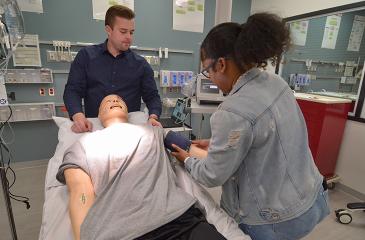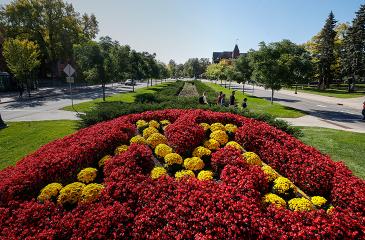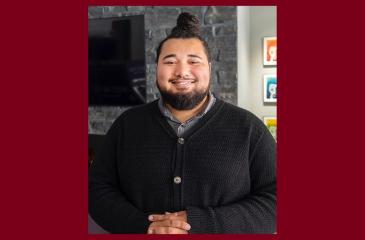There is an expected health care worker shortage in the coming decade. The urgency of workforce development has led to a unique collaboration between the Pre-Health Student Resource Center (PHSRC) and M Simulation to create a pipeline for community college students to learn about different health care fields and how to apply to programs.
Why Community Colleges?
The Pre-Health M Simulation Bridge Initiative is interested in students who are in community colleges looking to transfer to the University or other institutions with health career programs. The hope is to bring these students to campus and have them experience how simulation is used in health sciences education, share resources and information on what they need to do to apply and get accepted into those professional training programs, and ultimately, fill gaps in the health care workforce.
“M Simulation is a resource for the University of Minnesota and beyond, and our aim in collaborating with the PHSRC is to support students visiting our center to experience foundational clinical skills training that we provide at UMN,” said Lou Clark, PhD, executive director for M Simulation.
“The hope is to gauge an effective means of encouraging people into health care related fields. If these students have a drive to serve people in a direct patient care context, what information and support do they need to get there?" said E.B. Floersch, assistant director for M Simulation.
Clark and Floersch agree that programs such as this may be instrumental in terms of mitigating the ever growing shortage of the health care workforce.
Spring Pilot
PHSRC and M Simulation launched a pilot of three events, each experience nearly identical, where community college students, counselors, and advisors participated in hands-on simulation activities and learned about the transfer process as well as what it would take to apply into a health profession program. Twenty-one attendees from six different community colleges across the metropolitan area participated.
Each group went through three stations:
- A hands-on trauma situation, where M Simulation staff walked participants through step-by-step what it’s like to interact with a patient when they first come through an emergency department and are in critical condition – what are the first things to notice and address immediately, including bleeding, airways, major injuries, and circulation. This station was held in an inpatient room setting, with vitals on display, and covered multiple interventions. M Simulation staff discussed the different health careers that might deal with a similar situation – medicine, emergency room physician, nurse, ancillary staff, perhaps a technical role.
- IV training on a manikin in which participants learned what they need to consider before placement, how to initiate the IV, hook it up to an IV line set, use a needle catheter to pierce the skin and draw blood. Activities like this are common in nursing education, and this experience encouraged students to reflect on whether they are comfortable in that environment, or would prefer an administrative role.
- Human simulation and practice clinical communication skills through role play with Standardized Patients (SPs). SPs are community members trained by M Simulation SP educators to simulate actual clinical experiences by portraying individuals with specific medical conditions, concerns, and histories. Students practice role playing with SPs in order to ask medical history questions, and learn how to build rapport and communicate effectively with patients. Importantly, SPs provide feedback to health care learners from the patient perspective.
After the simulation activities, the PHSRC provided information on the preparation and application process to apply to a range of health degree programs and shared the types of experiences students should consider before going into a program.
“Admissions requirements and processes are very complex,” explains Tricia Todd, director of the PHSRC. “It is our job to be the experts in this area, and then support students in every way possible to build an authentic portfolio that will make them a strong candidate for their health profession of interest.”
The PHSRC collaborated with the U of M Transfer Admissions office to provide a more specific overview about transferring from a community college into a university system; they also shared key deadlines and contact information with advisors and students.
“The PHSRC has a notable drive and focus to engage learners at the level where they are at, whether that’s high school, community college, a four-year university, or beyond. We want learners to recognize and use these resources provided by the PHSRC and M Simulation to support them along their journey,” said Floersch, who himself benefitted from these services as a UMN undergraduate student.
Students completed a pre- and post-evaluation to gauge their interest in health professions as well as their confidence in getting into that profession.
“Getting hands-on experience really helped me determine that this could definitely be a career direction that I could go in," said one student.
The PHSRC and M Simulation most recently held a version of this event specifically for college advisors and career counselors to build key relationships and create a space to ask questions. With so much information available online, Todd, Clark, Floresch and their collaborators believe building a direct connection with community colleges, including advisors, is critical to enable students to make informed decisions about health care careers.
“This initiative is an example of exactly what we need to do in partnership with community colleges and others who have students and recent graduates interested in pursuing more health sciences' education, possibly at the U of M,” said Carolyn Porta, PhD, MPH, RN, associate vice president for clinical affairs. “These college-college partnerships are critical to academia collectively contributing to the solving of our health care workforce pipeline pain points."



